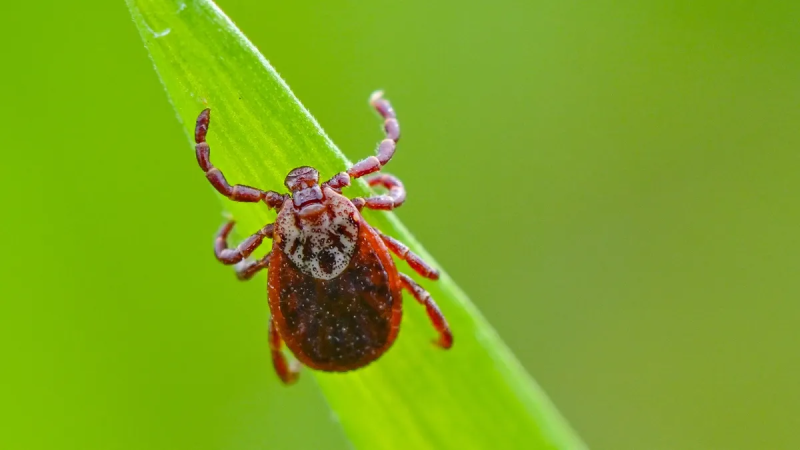Rocky Mountain spotted fever (RMSF): Symptoms, treatment, and prevention
Rocky Mountain spotted fever (RMSF) is an infectious disease caused by bacteria transmitted to humans via tick bites.
The Center for Disease Control and Prevention (CDC) says that "most people who get sick with RMSF will have a fever, headache, and rash. RMSF can be deadly if not treated early with the right antibiotic."
Explore its causes, symptoms, treatment, diagnosis and prevention methods, for a better understanding of the tick-borne illness and how to protect against it.
DEADLY ROCKY MOUNTAIN SPOTTED FEVER OUTBREAK IN CALIFORNIA LIKELY CAME FROM MEXICO, CDC SAYS
What causes Rocky Mountain spotted fever?
RMSF is primarily caused by the bacterium Rickettsia rickettsii, transmitted through the bite of an infected tick.
The American dog tick, Rocky Mountain wood tick and brown dog tick are common carriers.

Rocky Mountain Spotted Fever is primarily caused by the bacterium Rickettsia rickettsii, transmitted when an infected tick bites a person. (Patrick Pleul/picture alliance via Getty Images)
What is the survival rate of those with Rocky Mountain spotted fever?
The overall survival rate for RMSF is high when the disease is diagnosed and treated promptly.
However, the National Library of Medicine warns that "delayed treatment may lead to mortality rates as high as 20% to 30%."
The use of doxycycline, a commonly prescribed antibiotic, has been effective in treating RMSF.
Can you fully recover from Rocky Mountain spotted fever?
With timely treatment, individuals with RMSF can often fully recover.
Yet if it is not treated promptly or if there are delays in diagnosis, "the bacteria can cause damage to blood vessels throughout the body leading to organ and tissue damage,: the CDC states on their website.
In such cases, the prognosis for "RMSF can be fatal, even in previously healthy people. If not treated correctly, death can often occur within eight days of symptoms starting."
How are you diagnosed with Rocky Mountain spotted fever?
The diagnosis of RMSF presents challenges due to its nonspecific early symptoms.
Nevertheless, an accurate assessment involves a clinical evaluation, blood tests and consideration of the patient's exposure to tick-infested areas.
Early detection is key to preventing severe complications.
Is Rocky Mountain fever Lyme disease?
No, Rocky Mountain spotted fever is not Lyme disease. While both illnesses are tick-borne and share some similarities in terms of symptoms, they are caused by different bacteria.
"Lyme disease is caused by the bacterium Borrelia burgdorferi. It is transmitted to humans through the bite of infected blacklegged ticks," according to the CDC.
Where is Rocky Mountain spotted fever most commonly found?
RMSF is most commonly found in the United States. Contrary to its name, it is not limited to the Rocky Mountain region. It has been reported throughout various states, including North Carolina, Oklahoma, Arkansas, Tennessee and Missouri.
It is essential to be aware of tick exposure and take preventive measures in areas where RMSF is prevalent.
What are the symptoms of Rocky Mountain spotted fever?
"Symptoms usually develop over a few days, starting with fever, headache, nausea, vomiting and muscle pains," according to Cleveland Clinic. RMSF symptoms start two days to two weeks after a tick infects you with the disease, making it challenging to differentiate from other illnesses.
CLICK HERE TO SIGN UP FOR OUR LIFESTYLE NEWSLETTER
As the disease progresses, a distinctive spotted rash often appears, starting on the wrists and ankles and spreading to the rest of the body. "The rash develops within three days in about 50% of people," Cleveland Clinic continues.
How do you prevent Rocky Mountain spotted fever?
Proactive steps to prevent RMSF involve minimizing exposure to ticks. Wearing long sleeves, using tick repellents, and conducting thorough tick checks after outdoor activities can significantly reduce the risk.
CLICK HERE TO GET THE FOX NEWS APP
By understanding Rocky Mountain spotted fever's causes, symptoms, diagnosis, treatment and geographical distribution, individuals can take proactive steps to protect themselves and their communities from this potentially severe tick-borne illness.
Madeline Farber contributed reporting.
For more Lifestyle articles, visit www.foxnews.com/lifestyle.
Disclaimer: The copyright of this article belongs to the original author. Reposting this article is solely for the purpose of information dissemination and does not constitute any investment advice. If there is any infringement, please contact us immediately. We will make corrections or deletions as necessary. Thank you.







